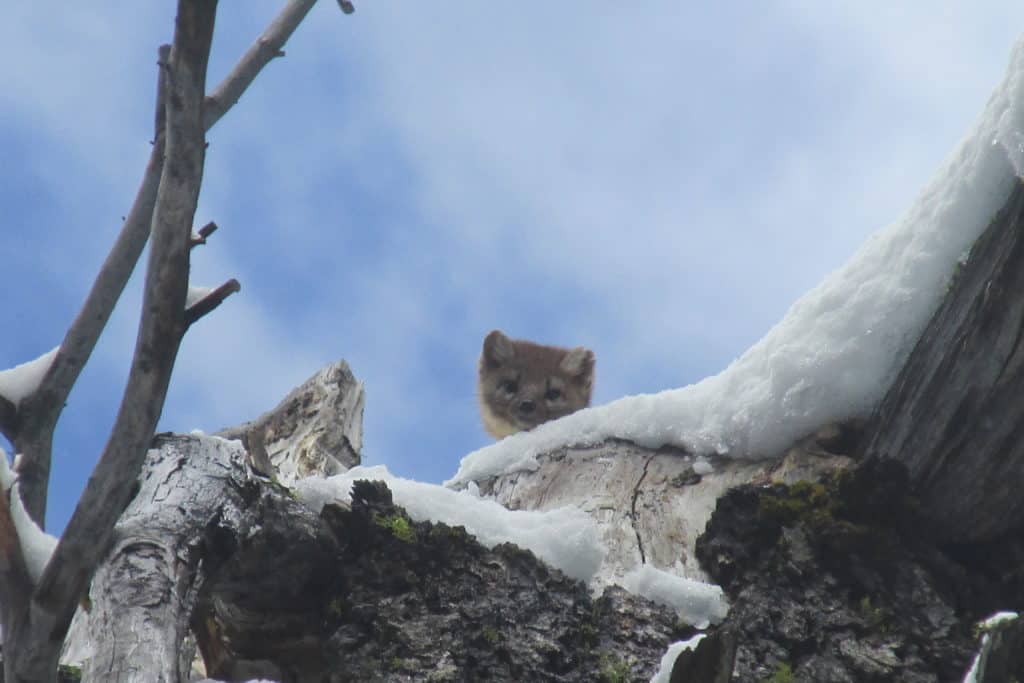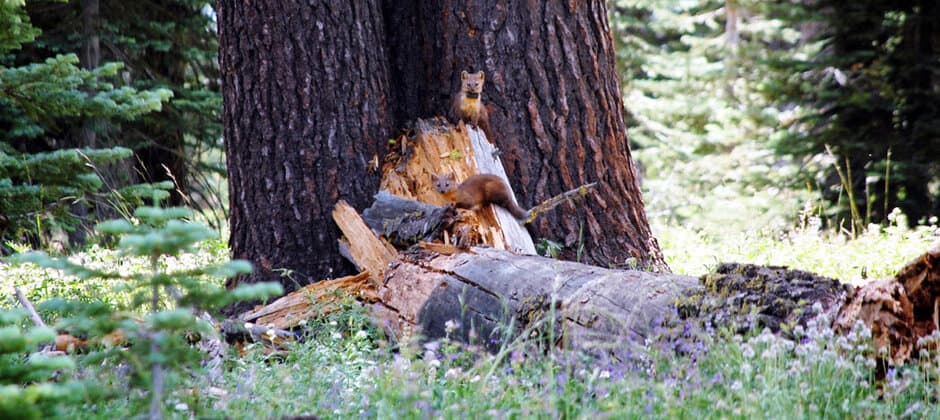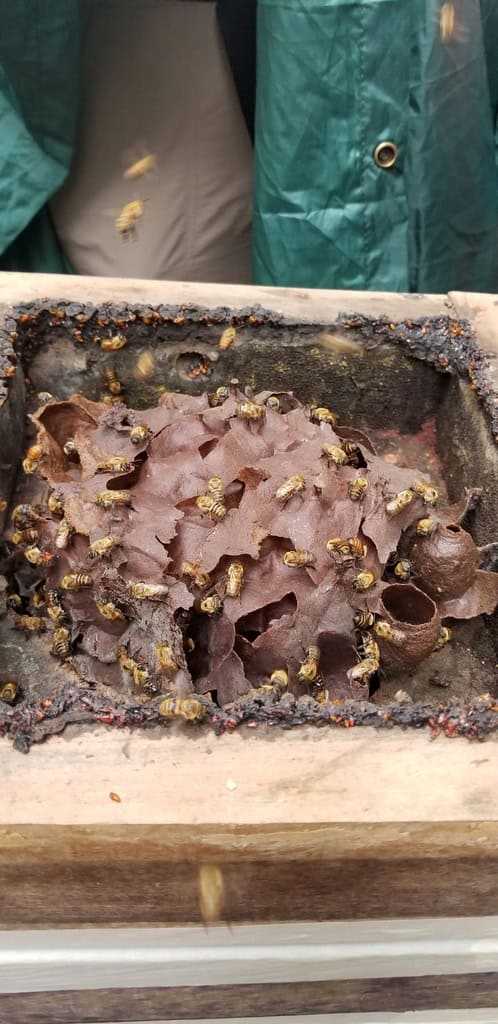Share this article
JWM: Bobcats are the main predators of Pacific martens
Bobcats are the main predators of Pacific martens in northern California, according to research on the causes of death for the small weasels.
Like spotted owls (Strix occidentalis), Pacific martens (Martes caurina) are forest dependent, and good indicators of forest health. The U.S. Forest Service considers impacts on the species when managing logging on its land. The small mammals in the weasel family weigh roughly 2-2.5 pounds and are sensitive to predation from bobcats (Lynx rufus), fisher species and sometimes coyotes (Canis latrans).
“They get eaten by just about any predator their size or bigger,” said Marie Martin, an assistant researcher in the Institute for Natural Resources at Oregon State University.
In a study published recently in the Journal of Wildlife Management, the team captured adult and subadult Pacific martens and fitted them with VHF collars. Part of this was done with animals from 2011-2014 before Martin began working on the project. Then, she and the research team continued the work from 2015-2018, resulting in a total 55 animals studied over both periods in California’s Lassen National Forest. The tracking data revealed where the martens were denning, resting and moving. The data also showed the researchers when they died. The team followed up with necropsies on the animals to determine the causes of the deaths.
The researchers documented 16 deaths, 13 of which were suspected predations. The most frequent predators of martens based on the forensic necropsies were bobcats, which claimed seven of the 13.

Martens prefer high elevation areas. Credit: Marie Martin
Depending on the sex of the Pacific martens, they were more vulnerable to predation at different times of the year, the researchers found. From February through April, females are more likely to be preyed on, perhaps since they give birth and raise kits during this period. The extra need they have for calories during this time may force them to move around more on the landscape, opening up more opportunities for predators to find them.
“They need to move around and get a lot of prey so they don’t starve to death, but the more they move, the more likely they are to encourage a predator on the landscape,” Martin said.
Males were more at risk of predation during the mating season in late summer for similar reasons. During this time, males move around a lot more than normal in an effort to mate with as many females as they can.
The researchers also found that one marten in their study died from chemical poisoning from an anticoagulant rodenticide. These kinds of rodent poison have been banned in California for several years now, but are still often used in illegal marijuana plantations in Forest Service land. This is the first report Martin is aware of involving this kind of poisoning on Pacific martens, and she speculated that climate change might be indirectly at fault.
Marijuana growers usually prefer mid-elevation areas for their crops, but warmer weather and shorter snow seasons could be making higher elevation areas where martens are found more suitable for marijuana growth. This could mean that martens may come into more contact with the rodenticides used to keep wildlife away from the marijuana. The animals may be eating the poison directly or scavenging the dead rodents that eat the rat poison.

Researchers studied tracked martens in Lassen National Forest. Credit: Marie Martin
The researchers also found that adult survival of Pacific martens wasn’t that low, with about 80% of females surviving every year and 70% of males.
Martin said it’s possible that predation might increase in the future since their main bobcat predators tolerate human disturbance fairly well. She speculated that this could mean that bobcats may come into contact with martens more often in the future.
This article features research that was published in a TWS peer-reviewed journal. Individual online access to all TWS journal articles is a benefit of membership. Join TWS now to read the latest in wildlife research.
Header Image: Researchers investigated the main causes of death for Pacific martens. Credit: Mark Linnell








